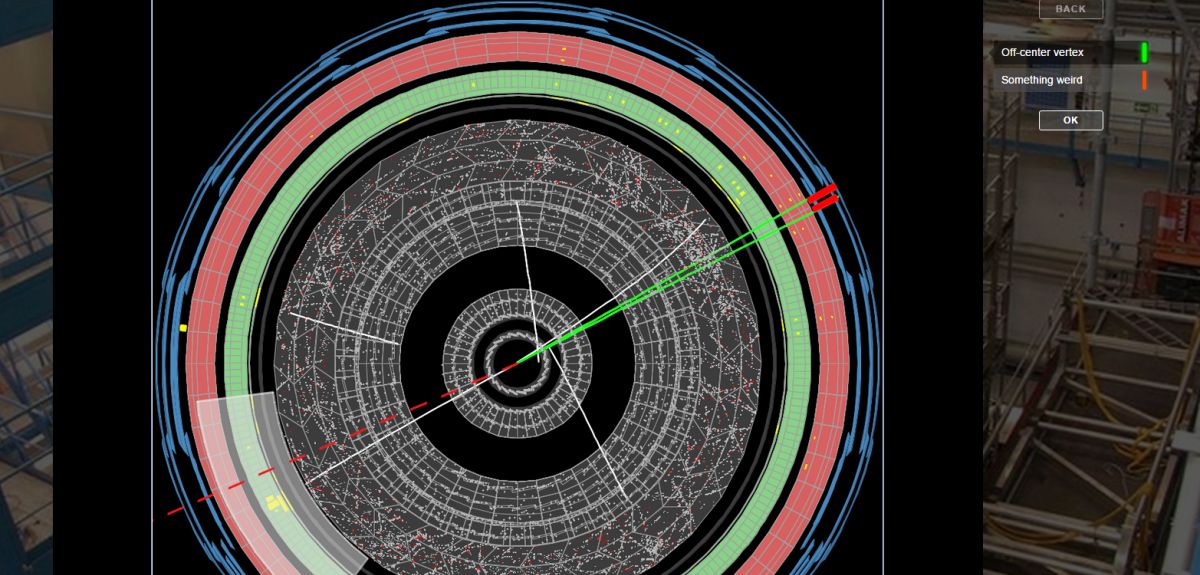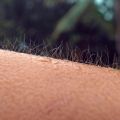
Join the hunt to break the Higgs boson 'barrier'
Online volunteers are being asked to spot tiny explosions that could be evidence for new particles that will require new models of physics.
Higgs Hunters [www.higgshunters.org], a project launched today by UK and US scientists working on the ATLAS experiment, enables members of the public to view 25,000 images recorded at CERN’s Large Hadron Collider. By tagging the origins of tracks on these images volunteers could spot tiny sub-atomic explosions caused when a Higgs boson 'dies', which some scientists think could generate a kind of particle new to physics.
'If anything discovering what happens when a Higgs boson 'dies' could be even more exciting than the original discovery that the Higgs boson exists made at CERN back in 2012,' said Professor Alan Barr of Oxford University's Department of Physics, lead scientist of the Higgs Hunters project. 'We want volunteers to help us go beyond the Higgs boson 'barrier' by examining pictures of these collisions and telling us what they see.'
In the ATLAS experiment at CERN's Large Hadron Collider protons are smashed together at up to one billion kilometres per hour. Such collisions can generate Higgs bosons: these are known to rapidly decay into other particles and some scientists believe these could include a new type of previously unobserved particle. Simulations predict that these new particles should leave tell-tale tracks inside the ATLAS experiment, which computer programs find difficult to identify, but which human eyes can often pick out.
Professor Andy Haas of New York University said: 'Writing computer algorithms to identify these particles is tough, so we're excited to see how much better we can do when people help us with the hunt.'
Professor Chris Lintott of Oxford University's Department of Physics, Zooniverse Principal Investigator, said: 'The most exciting citizen science comes when you find the unexpected lurking amongst the data, and who knows what could be out there in the data from the ATLAS experiment?'
Professor Dave Charlton, spokesperson of the ATLAS Collaboration, said: 'With the Higgs Hunters project, people can look directly at ATLAS data to help us find unexpected phenomena - perhaps volunteers will be able to spot new physics with their own eyes!'
A successful detection of new particles would be a huge leap forward for particle physics, as they would lie beyond the Standard Model – the current best theory of the fundamental constituents of the Universe.
The Higgs Hunters project is a collaboration between scientists at the University of Oxford, New York University, the University of Birmingham, the Zooniverse project, and the ATLAS experiment at CERN. The project was funded by a Google Global Impact Award, by the UK's Science & Technology Facilities Council, and by the US National Science Foundation.
 Researchers find oldest undisputed evidence of Earth’s magnetic field
Researchers find oldest undisputed evidence of Earth’s magnetic field
 Honorary degree recipients for 2024 announced
Honorary degree recipients for 2024 announced
 Vice-Chancellor's innovative cross-curricular programme celebrated
Vice-Chancellor's innovative cross-curricular programme celebrated
 New database sheds light on violence in Greek detention facilities
New database sheds light on violence in Greek detention facilities
 New trial using skin patches as an ‘early warning system’ to spot lung transplant rejection
New trial using skin patches as an ‘early warning system’ to spot lung transplant rejection